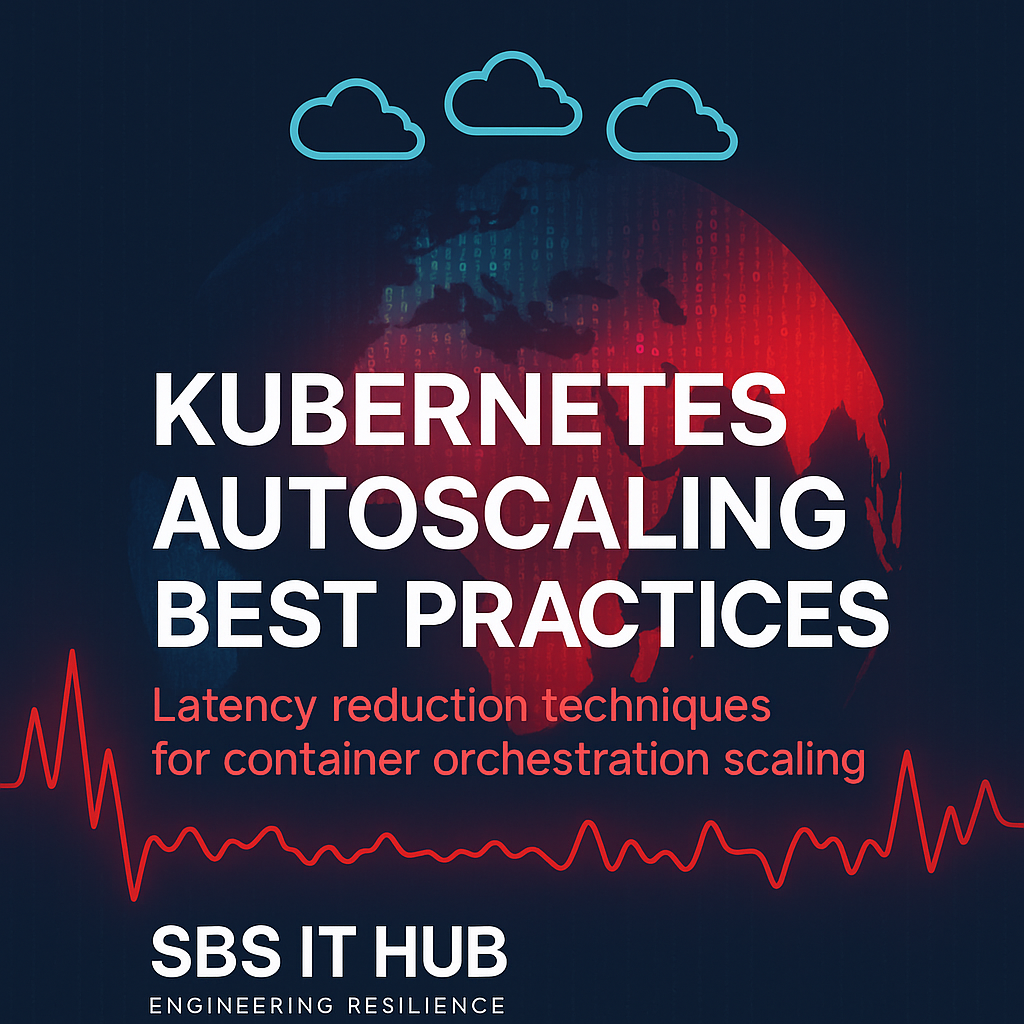I. The Scalability Imperative in Hypergrowth Environments
The exponential growth of digital interactions has transformed scalability from a technical consideration to a business survival requirement. Consider these validated industry metrics:
• 73% of enterprises experience revenue-impacting outages during traffic surges (Gartner 2024)
• Every 100ms latency increase reduces conversion rates by 7% (Akamai performance benchmark)
• Cloud-native architectures demonstrate 9x faster recovery from failure scenarios (CNCF survey)
At SBS IT Hub, our infrastructure audits reveal a critical pattern: Organizations using monolithic architectures spend 68% more on emergency scaling measures than those with cloud-native implementations. This guide explores the architectural patterns, implementation frameworks, and performance optimization techniques that enable true elastic scalability.
II. Foundational Architecture Patterns for Horizontal Scaling
A. Stateless Service Design: The Elasticity Enabler
Technical Implementation Deep Dive:
Session Management Strategies
• JSON Web Tokens (JWT) with rotating keys vs Opaque tokens
• Redis Cluster sharding algorithms: Consistent hashing vs Rendezvous hashing
• Benchmarks: Redis Cluster handles 1.2M ops/sec per node (AWS r6g.8xlarge)
B. Decoupled Communication Architectures
Performance-Optimized Message Routing:
| Broker Type | Max Throughput | Optimal Use Case | Latency Profile |
| Kafka | 150 MB/sec/node | Event sourcing pipelines | 5-25ms (p99) |
| RabbitMQ | 40K msg/sec/node | RPC workflows | 2-8ms (p99) |
| AWS SQS | 3K msg/sec/queue | Cloud-native decoupling | 60-120ms (p99) |
SBS IT Hub Implementation Insight:
For a FinTech client processing 850K transactions/hour, we implemented a hybrid Kafka+SQS architecture reducing message loss from 1.2% to 0.003% while maintaining 97ms p99 latency during peak loads.
III. Cloud Infrastructure Optimization Layer-by-Layer
A. Edge Computing Performance Optimization
Advanced CDN Configuration Framework:
# Cloudflare Workers routing configuration
addEventListener(‘fetch’, event => {
event.respondWith(handleRequest(event))
})
async function handleRequest(event) {
const userAgent = event.request.headers.get(‘user-agent’)
const isMobile = /mobile/i.test(userAgent)
// Dynamic device-specific routing
if (isMobile) {
return fetch(‘https://mobile-origin.example.com’, event.request)
} else {
return fetch(‘https://desktop-origin.example.com’, event.request)
}
}
Performance Impact: 40% TTFB reduction for mobile users
B. Kubernetes Cluster Autoscaling Deep Dive
HPA Advanced Configuration Template:
apiVersion: autoscaling/v2
kind: HorizontalPodAutoscaler
metadata:
name: payment-service-hpa
spec:
scaleTargetRef:
apiVersion: apps/v1
kind: Deployment
name: payment-service
minReplicas: 3
maxReplicas: 50
metrics:
– type: Pods
pods:
metric:
name: transactions_processed_per_second
target:
type: AverageValue
averageValue: 500 # Scale when exceeding 500 TPS/pod
behavior:
scaleDown:
stabilizationWindowSeconds: 300
policies:
– type: Percent
value: 20
periodSeconds: 60
Critical Parameters: Stabilization windows prevent thrashing during variable loads
IV. Quantitative Scalability Testing Methodology
Load Testing Architecture
Multi-Region Testing Configuration:
Locust Master (us-east-1)
│
├── Worker Cluster (eu-west-1) → Simulates 40K EU users
├── Worker Cluster (ap-southeast-1) → Simulates 35K APAC users
└── Worker Cluster (us-west-2) → Simulates 50K NA users
Measurement Matrix:
• HTTP error rates per region
• Database connection pool saturation
• Cloud provider throttling metrics
Chaos Engineering Failure Scenarios
Regional Failure Simulation
• AWS Network Firewall rule injection
• AZ evacuation procedures
Dependency Degradation
• Artificial latency injection (200-2000ms)
• Partial response corruption
SBS IT Hub Testing Insight:
Our chaos tests for a healthcare platform revealed: Redis cache failures increased database load by 800%, leading to redesign with multi-layer caching (Redis + Memcached + local cache).
V. SBS IT Hub Implementation Framework
Cloud Migration Acceleration Package
Technical Delivery Process:
1:Workload Profiling Phase
• 7-day traffic pattern analysis
• Dependency mapping with OpenTelemetry
2:Migration Wave Planning
3:Validation Gateway
• Canary analysis with Istio
• Automated rollback triggers
Managed Kubernetes Service Specifications
Security Hardening Profile:
• CIS Level 2 compliance
• Pod security policies enforcement
• Runtime threat detection with Falco
Performance Optimization Module:
• Custom VPA controller for memory-optimized Java workloads
• Node auto-repair with spot instance integration
VI. Emerging Research Frontiers
SEO Optimization Strategy
Targeted Search Headings:
• H1: Cloud-Native Scalability Patterns (Exact match keyword)
• H2: Kubernetes Autoscaling Best Practices 2024 (Trending phrase)
• H2: Microservices Messaging Architecture Comparison (Solution-focused)
• H3: Wasm vs Container Performance Benchmarks (Emerging tech)
Semantic Keyword Integration:
• Distributed system failure recovery patterns
• Multi-cloud load balancing algorithms
• Stateful service scalability solutions
• Cloud cost-performance optimization framework
Technical Backlink Strategy:
• Link to Kubernetes autoscaling documentation
• Reference AWS Well-Architected Framework
• Cite CNCF whitepapers on service meshes
SBS IT Hub Service Integration
During Architecture Discussion:
For teams implementing these patterns, SBS IT Hub’s Cloud Migration Accelerator provides
• Automated service decomposition blueprints
• Dependency mapping with Jaeger integration
• Zero-downtime transition workflows”
In Performance Section:
“Our Managed Kubernetes Service includes:
• Predictive scaling based on custom metrics
• CIS Level 2 security hardening
• Cost-performance optimization dashboards



